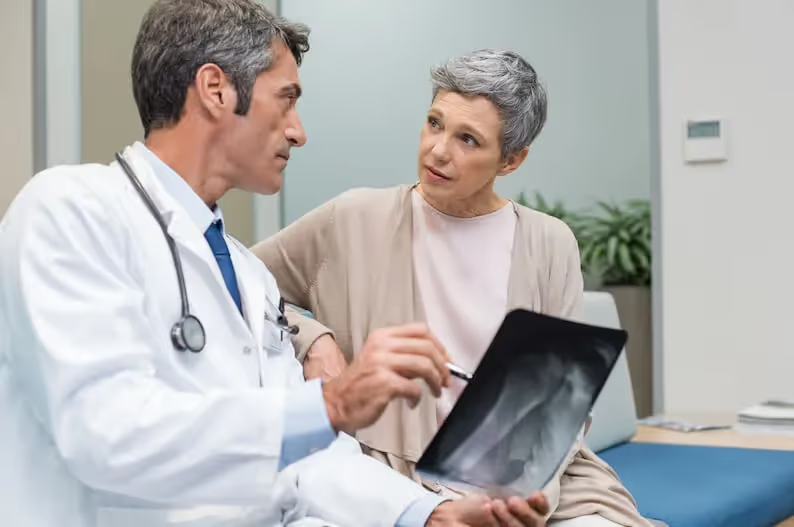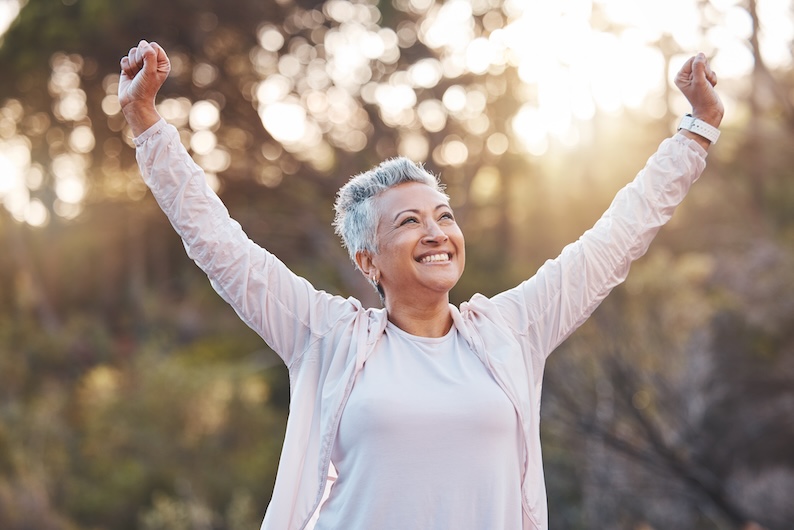Bone density starts to become a bit of a prized possession the older you get, especially for women. As we continue to age, protecting bone health is a concern that we must make a priority. A single fall that leads to a bone fracture can create a multitude of health issues. And serious ones at that. Our bones are continuously changing – absorbing and replacing bone tissue. And although the bone growth process is more efficient and quicker the younger we are, we can still benefit from taking precautions and action to protect and strengthen our bones no matter our age. Believe it or not, bone density loss and osteoporosis are not normal signs of aging. Yes, they are common issues affecting aging adults, but they aren't guaranteed health issues. Here's some basic information about osteoporosis, in addition to a few ways you can halt bone loss and increase bone density to build your bones back stronger.
What is Osteoporosis?
Sure, it's a common term thrown around amongst doctors and clinical staff when you're at an appointment, but what exactly is osteoporosis? The word itself means porous bone. Osteoporosis is a bone disease that develops when bone mineral density and bone mass decrease. It occurs when new bone creation can't keep up with the old bone removal. Many individuals who have osteoporosis don't even know they have the disease until they break a bone or endure a fracture. There are rarely any symptoms to alert you that you're falling victim. Osteoporosis affects both men and women as well as all races and ethnic groups. However, women account for 80 percent of the diagnosed osteoporosis cases. Because the majority of cases are found in women, many men don't believe they are at risk for developing the disease. But, in reality, men are very much at risk, with 20 percent of osteoporosis diagnoses belonging to men over the age of 50.
Risk Factors for Osteoporosis
Age, genetics, and hormones all play a major role in your risk for osteoporosis. However, other factors can increase your risk, such as your ethnicity. For example, Asian women are at a higher risk for osteoporosis due to their small frames and lighter weight, which often leads to low bone density. Mexican-American and white women over 50 also have an increased risk of having the bone disease. Other risk factors include: Pre- or Post-Menopausal – Leading up to and during menopause, women's ovaries produce or stop altogether with the production of the hormone estrogen, which helps protect bone density. Insufficient Levels of Calcium and Vitamin D – These vitamins work together to build and maintain strong bones. Lack of Physical Activity – Weight-bearing activity, such as walking, strength training, or playing tennis, is needed to help increase bone density. Smoking – The longer you smoke, the higher the risk for broken bones Excessive Alcohol Use – Long-term, heavy drinking can lead to bone loss due to a decreased ability to absorb calcium and metabolize vitamin D. Certain Medications – Some medications that are taken for long-term health problems, such as thyroid disease and arthritis, can decrease bone density.
How Is Osteoporosis Diagnosed?
If your doctor suspects you may be suffering from weakened bones or osteoporosis, they will order a bone density test. A bone density scan is a special type of X-ray for your bones that uses a very low amount of radiation.
How is Osteoporosis Treated?
Unfortunately, you cannot reverse osteoporosis, nor can you cure it. It's a disease you must manage and work hard to prevent future damage from occurring. Treating osteoporosis simply aims to slow down and stop bone loss. You can achieve this with:
- Medication Therapy
- Lifestyle Changes
- Exercise
- Balanced Diet
Together, you and your provider can create a treatment plan to help monitor your progress and help to prevent falls, which may lead to fractured bones.
Osteoporosis Prevention
Instead of just assuming or accepting you're doomed for weak and brittle bones because you're getting older, take action to prevent osteoporosis and build your bone strength and density. You can take several steps to slow the natural bone loss due to aging and increase bone density. Make sure you get enough calcium and vitamin D each day. If you can't get it through your diet, take a supplement. Always consult with your provider before taking any supplements, though. The daily amount of calcium in milligrams (mg) required for adults is:
- 51-70-year-old males should consume 1,000mg per day
- 51-70-year-old females should consume 1,200mg per day
- 70-year-olds and over should consume 1,200mg per day
Try to eat more vegetables, especially dark leafy greens, such as broccoli, spinach, kale, and collard greens. These are all great sources of vitamin D and K, which are essential to calcium absorption and calcium accumulation in your bones. Also, try to increase your protein with low-fat dairy products, oily fish, egg yolks, and liver. In addition to modifying your diet, get and stay active. Adopt a fitness program that works for you. Pick something you enjoy so you'll stick to it. Just 30-minutes of exercise a day can help strengthen bones and help prevent osteoporosis. Avoid low-calorie diets that deprive your body of the necessary nutrients for healthy bones. If you smoke, stop smoking, and if you drink, drink in moderation. Healthy aging is achieved through healthy living. Just because you're getting older doesn't mean you have to succumb to the "age-related" stereotypes. You can achieve Better Health by taking Better Care of yourself, and that starts with prevention. If you are worried you might be suffering from bone loss or osteoporosis, schedule an appointment with a VIPcare provider today!




